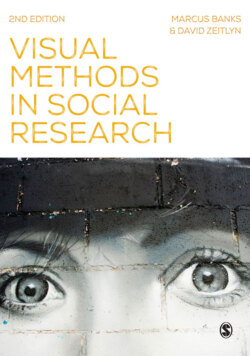Читать книгу Visual Methods in Social Research - Marcus Banks - Страница 17
На сайте Литреса книга снята с продажи.
Notes
Оглавление1 On the history of the visual in anthropology, see MacDougall 1998b; Morphy and Banks 1997; Pinney 1992a; for sociology, see Harper 1998; Stasz 1979.
2 Several methods guides have appeared in recent years such as Reavey 2011; Pink 2012; and Rose 2012.
3 As Pels (1996) points out in his review of Jay’s expansion of Fabian’s argument (1993).
4 While the affective power of an image is often strongly related to formal properties of composition and so forth, this is an aspect we only touch on in passing. One reason for this is that formalist analytical approaches, which tend to stress the skill or even genius of individual producers, have dominated approaches to the history of art and of photography and have obscured the more sociological approaches we are concerned with here.
5 An earlier version of this section first appeared in Banks 2007: Chapter 3.
6 Iedema does not, in fact, refer to his approach as an example of content analysis. MB has argued elsewhere, however, that his ‘social semiotic’ approach to the latent meaning of the film rests upon an approximated quantitative approach to the content of the film’s scenes (Banks 2007: 47–48).
7 The term is Garfinkel’s (cited in Heath et al. 2010: 88), although in our opinion this is an instance of what we consider to be an unexamined assumption in ethnomethodological analysis.
8 It is another premise of ethnomethodology that while human subjects are understood to be – normally – competent social actors, they are also understood to be unconscious of their competence; social life would be unbearable and unsustainable if we had to consciously plan all the micro-detail of social interaction.
9 Popular basic guides to research project planning include Bell 2010 and Walliman 2011.
